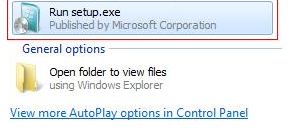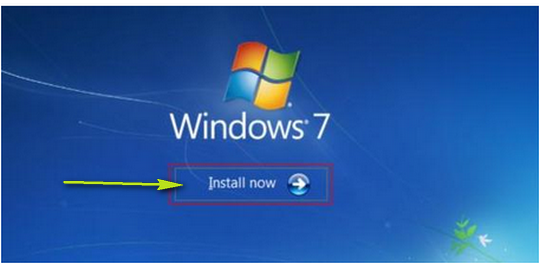How to Repair Windows 7 By Doing a Repair Installation
Before we get started, we’ll tell you that you won’t find this on Microsoft’s Web site – although they allude to it several times. And there are a couple things you need to keep in mind first: Anytime you reinstall an operating system there’s a chance that something will go wrong and you’ll lose some — or a lot of dat
Let’s get started.
You’ll need the following things before you can reinstall Windows 7 on your Windows 7 computer:
1. A Windows 7 DVD – if you don’t have one, borrow one. It’s completely legal. All Windows 7 DVDs have both 32bit and 64 bit versions of Windows. All you need is your own registration key. If you borrow a Windows 7 DVD from someone, make sure you have the same version as the version you already have on your computer. You can also legally download the Windows 7 ISO files and create your own Windows 7 SP1 DVD installation disk. Here’s what you’ll need:
- A blank, writable DVD disk
- Your Windows 7 Product Key. You’re going to need a product key before you begin the repair installation of Windows 7. You’ll need a valid product key before you can download the Windows 7 ISO file. Almost always your Windows 7 product key is attached to the back of your tower (if you’re using a desktop) or the bottom (if you’re using a laptop). You’ll need to write this down carefully as you’re going to need it when download the Windows 7 ISO file and again when you being the repair installation. If you cannot find your Windows 7 product key anywhere, You can get your Windows 7 key by using a tool such as Magical Jellybean Keyfinder (the free version is just fine). You can get it from: http://www.magicaljellybean.com/keyfinder/.
- Download the Windows 7 ISO file. You can download the Windows 7 ISO file from this page. You’ll need your product key before you can download from this page.
- After you’ve downloaded the Windows 7 ISO file, you’ll need to create the installation DVD. It’s easy. Insert a blank, writable DVD disk into your DVD/CD drive. Then double-click on the ISO file you downloaded. Windows will burn the ISO file to the DVD. Make sure you label it then put it aside.
Once you are sure you have everything you need, it’s time to proceed with the “repair” installation of Windows 7. This will replace any missing or corrupted Windows system files and leave all your data and programs intact.
1.) Insert your Windows 7 DVD in your DVD drive but do not let it auto-start. Instead click Start / Computer and click on your DVD drive and find “setup.exe” and double-click it. Widnows 7 installation will start.

2.) Then click “Install now”.

3.) Next you’ll see a screen asking if you want to check for updates. We suggest that you do this. This will take several minutes. After this is finished, you’ll see “Restarting Installation”.

4.) Next you’ll have to agree to the terms of the license to continue.
5.) After you agree to the license, you’ll see the following screen. Choose “Upgrade”.

6.) After installation is complete, you’ll need to enter your license key and then activate Windows.
7.) Hopefully, this re installation – or “repair” installation will fix whatever problems you were having. All you files and programs should be exactly like they were before. But no guarantees — we’re not liable for anything, capiche?
We urge you to backup your files before starting any major repair routine – just in case.


Unfortunately Microsoft says: “If you’ve used Disk Cleanup since installing SP1, the backup files needed to uninstall the service pack might have been deleted from your computer. To remove the service pack, you’ll need to reinstall Windows 7” . This was my case and I had to re-install windows.
Disc Cleanup is always recommended when cleaning up a computer. Should it never be run or Is there any way to prevent these files from being deleted when using Disk Cleanup.
Running Disk Cleanup does not prevent you from doing a repair installation. Disk Cleanup only cleans the WindowsOLD folder if you use the advanced settings in Disk Cleanup — most people don’t even know there is advanced options. And it does not matter even if you did use advanced options to clear the Windows OLD folder – those files are found only on computers that have been upgraded from an earlier version of Windows — say Vista to 7 or 7 to 8. Those files have nothing to do with the article we wrote. Trust me on this, if you do things as we wrote in the article you can do a repair install — providing you can remove Service Pack One. If your computer was new and came with Service Pack One, you can’t remove SP1 anyway — so it’s moot.
It is great that you gave these instructions out to people saving them from a costly reinstall. Now, I realize a lot of people do not like Dell Computers, but if you take their repair plan out, costing I believe 120.00 a year, should you need to reinstall, they walk you through it step by step… or if you dont feel comfortable in doing it… they will reinstall it for you. Don’t know if other computer makers do the same, though.
As far as I know Jason, Dell will help you re-install Windows but re-installing Windows will wipe everything off the computer. The post we made was how to reinstall Windows without losing any programs or personal files. Just about anyone with a Windows disc can reinstall windows — without any instructions. Just book from the diak and choose “Install Windows Now” and choose the current Windows partition (usually 0) and click Install now – you get a warning that all your files and programs will be deleted, click OK and 40 – 50 minutes later you have a full Windows installation. Of course, you’ll be starting all over. Dell’s all come with recovery partitions too — you can access it by press F11 at startup (at least that’s how it used to be) and the wizard walks you through it — it will restore your computer to its factory state — the exact way it was when you bought it – again this method does not preserve anything — everything you have not backed-up will be gone with the Windows :-).
Be very careful with this. I have not heard where Dell will help you re-install Windows while keeping all your personal files. Maybe they’ve changed. I don’t normally call Dell — in fact, I never have 🙂